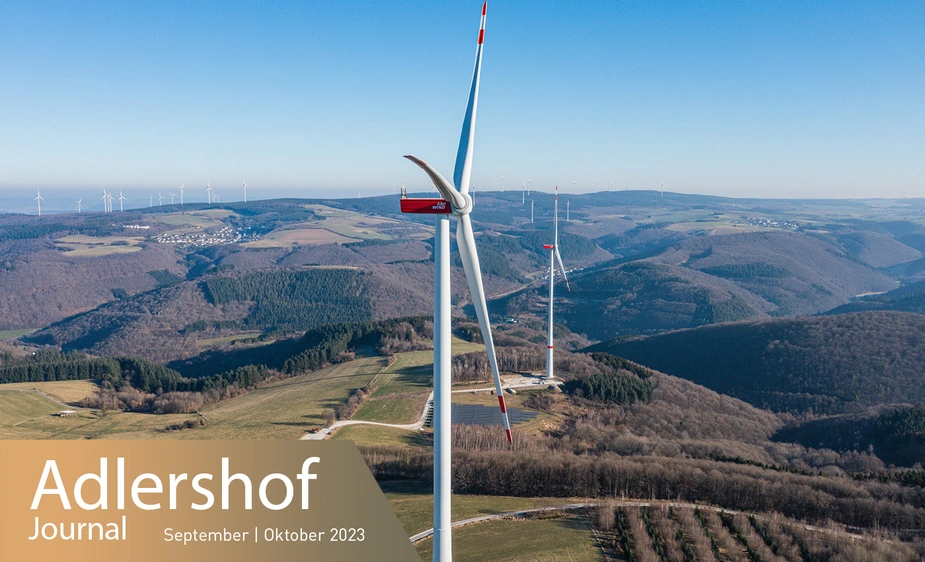Renewables in its DNA
ABO Wind is a wind farm project development company that is working on the energy transition
The energy transition is built on sun and wind. But the path to putting facilities on fields and meadows is long. The project development company ABO Wind knows the way around but is also aware of the pitfalls. The company has been in business for almost 30 years. Fifteen of these years it has running its operating from Adlershof.
“Renewables are in our DNA,” says Daniel Duben, who is responsible for communications at the company headquarters in Wiesbaden. “This sets us apart from other companies who have focused on projects in coal and nuclear for a very long time and are only now entering the renewables market.” ABO Wind was different. It all began in 1996 when Jochen Ahn and Matthias Bockholt hung up their hats at the Hessian Ministry of the Environment and founded a project development company for wind farms. “We are committed to renewables out of conviction,” says Daniel Duben. “Our founders saw this as the right path to take towards a more liveable future.”
Even though more recent projects include solar parks, storage batteries, and hydrogen production, in the beginning, it was all wind. Seeing as wind can be harvested particularly well in Brandenburg, the decision to go to Adlershof was a logical one. “Berlin is our oldest branch,” says Ute Simon, who runs the office on Volmerstrasse and has been there almost from the onset. “Most of our activities take place in the East German federal states,” she says. “Simply because of the spatial proximity to the project.” This is especially important, she says, in the first phase of building a wind or solar park. “When we look for land parcels. When we speak to the owners and try to come to an agreement and draw up a contract. That’s when we have to be able to be with people on location.”
How does one find the land parcels that are feasible for wind farms? Does one simply drive around and keep an eye out? Ute Simon laughs: “In the five German federal states that we work in, there are regional plans designating various so-called priority areas,” she explains. “These plans stipulate where wind farms can be built in the first place.” However, waiting for these regional plans to be completed would be unwise for a wind park project developer. The development of a regional plan is a lengthy process. “For this reason, project developers invest into finding out which land parcels are generally suitable given the legal framework conditions before the plan is finished,” says Ute Simon. In doing so, many prohibitive rules and criteria must be observed. Is sufficient distance kept to residential areas? Do protected areas prohibit construction? Is there a preservation order that restricts certain areas? Is there a nearby civilian radar? Or military? “Once we have found land parcels where planning rights can be created, we lease the land from its owners. The land can belong to private individuals, but, more often, it belongs to counties or forests owned by the federal states. Subsequently, we start the concrete planning.”
What follows then is paperwork in the most literal sense possible. “There was a time when the application for a wind farm permit would fit into a single file folder,” says Duden. “Today, we hand in 16 lever arch files. That’s enough to fill the back of a car. Paper documents are required, not digital, if that’s what you thought.” Then, they wait. The legally enshrined processing time of three to seven months is currently often stretched to between one and a half and two years. Constructing the facility is typically done within a year. During this time, the teams typically look around for buyers. “This can be municipal utilities, pension funds, or cooperatives,” says Duben. “We enjoy working with the latter the most. They have citizens take the energy transition into their own hands.” Operating wind farms is not part of ABO Wind’s portfolio. “However, we do take over operations and the servicing of facilities on behalf of clients,” he goes on to say. “We can offer renewables from a single source. This, too, sets us apart from other companies.”
Kai Dürfeld for Adlershof Journal

